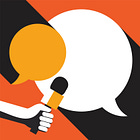
Interviewing users is a tough job
We frequently mention “talk to your target users” as if it is the most natural and simplest act of all.
The reality is, extracting insights from users is darn hard.
You need knowledge (i.e. what makes a good interview) and constant practice. No matter how experienced you are, there would inevitably be bad days on which you have a brain freeze or your tongue slips.
What’s one to do?
Embracing a Curious mindset
I believe Curiosity is the secret weapon that can make every user interview as best as possible.
There are 2 reasons:
Reason #1
Curiosity makes good conversations, and good conversation is the basis of a good interview (as mentioned in my other post below)
When you enter an interview armed with “questions to ask; answers to get”, your interview will end up as an interrogative experience which no one enjoys. It also lowers the chances of you getting voluntary, deep user insights.
Instead, think of it this way: you are entering a conversation with curiosity to discover more about this person and their thoughts. Urgent project? Boss breathing down your neck for data? Leave all these worries at the door.
The time an interviewer gets to spend with an interviewee is sacred and should be cherished. Only when you pay full attention in that experience, will your interviewee reward with the same attention.
Reason #2
Curiosity takes you out of the “validating our product” narrow mindset - the right focus for product usability tests but the wrong focus for customer discovery.
An Example
Let’s say I’ve built a study aid MVP based on the assumption that university students are easily distracted when they study alone. It’s exam time and I’m lucky to be able to arrange 4 one-on-one interviews. I intend to make the best of each conversation.
My goal is to gain deep insights into
how students study
if focusing is indeed a real problem and pain point
what are their needs, motives, and emotions
(secondary and optional) if there is general alignment between my product and the users’ needs
Here’s how I would structure the interview:
(note: by “structure” I mean a guide with prompts to help move the conversation along smoothly. It is not meant to be a rigid Q&A.)
1. Build rapport
I am big fan of building rapport before starting the interview. Take as long as needed - while being mindful of the time of course. Just chat like a human and ask how their exams are going. Thank them for taking the time to chat.
2. Contextual grounding
Ask about their study habits. Mixing both story-based questions (“tell me the last time you ….”) and general questions (“where do you usually….”)
“Walk me through how you prepared for your last exam”
“Where do you usually study?”
“Do you usually study alone or with others?”
“Do you use any tools or techniques to stay focused?”
The goal is to understand their related behaviours but not about the product.
3. Explore pain points
Dig deeper into any friction points or struggles they mention.
“You said you get distracted easily - can you tell me more about that? Tell me about the last time you found yourself distracted.”
“Have you tried anything to fix that? What worked? What didn’t?”
Their answers guide the conversation which is still about the interviewee’s life, not about the product. Continue to prompt and gather relevant information.
4. The magic wand ideal
“So to sum up….”
“What would an ideal study session feel like for you?”
“Let’s say you had a magical wand that helped you study better - what would it do?”
Let them know you’ve heard them (and that you are wrapping up) by summarizing the conversation. Answers to the magic wand question can inspire entirely new directions for the product— or reinforce the emotions and needs as discussed.
5. (Optional) Lightly test the MVP idea
Once I have truly understood their study habits and listened to their struggles, I would briefly mention my MVP and ask if they are willing to test it out.
“I’m working on something that helps students stay focused. [brief description, show prototype]. Would you be interested in testing this out later and provide some feedback?”
If they respond with enthusiasm and are willing to talk more, that’s a great time to collect some feedback to the product concept. Be aware that this is not the time for a full product discussion or usability test.
6. Close with gratitude
Thank them sincerely. Arrange MVP trial if discussed. Offer to share progress if they’re interested. Ask if they may introduce me to other interviewees or testers.
Final Thoughts
In his classic book Interviewing users, Steve Portigal says:
… I approach the interviews with a sense of what I can only call
a bland curiosity”
User interviews are hard but with curiosity as your compass, they become not just manageable but fruitful and enjoyable.
You stop interrogating and start exploring. You stop validating and start learning.
And that, ultimately, is what building something people truly want is all about.




Curiosity, such a big driver of success, and sadly something that is so often discouraged in kids in their key forming years. Great article.
Curiosity unlocks doors even before you know they exist.
It’s the spark behind every discovery and the fuel for lifelong learning.